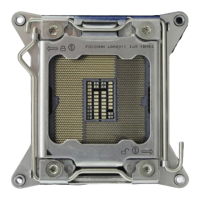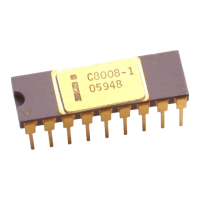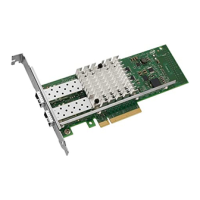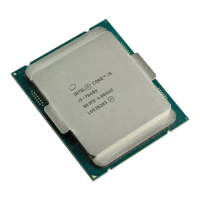Intel® Xeon™ Processor with 800 MHz System Bus
Datasheet 67
6.0 Thermal Specifications
6.1 Package Thermal Specifications
The Intel® Xeon™ processor with 800 MHz system bus requires a thermal solution to maintain
temperatures within operating limits. Any attempt to operate the processor outside these operating
limits may result in permanent damage to the processor and potentially other components within
the system. As processor technology changes, thermal management becomes increasingly crucial
when building computer systems. Maintaining the proper thermal environment is key to reliable,
long-term system operation.
A complete solution includes both component and system level thermal management features.
Component level thermal solutions can include active or passive heatsinks attached to the
processor Integrated Heat Spreader (IHS). Typical system level thermal solutions may consist of
system fans combined with ducting and venting.
For more information on designing a component level thermal solution, refer to the Intel® Xeon™
Processor with 800 MHz System Bus Thermal/Mechanical Design Guidelines.
Note: The boxed processor will ship with a component thermal solution. Refer to Section 8.0 for details
on the boxed processor.
6.1.1 Thermal Specifications
To allow the optimal operation and long-term reliability of Intel processor-based systems, the
processor must remain within the minimum and maximum case temperature (T
CASE
) specifications
as defined by the applicable thermal profile (see Table 23; Figure 23). Thermal solutions not
designed to provide this level of thermal capability may affect the long-term reliability of the
processor and system. For more details on thermal solution design, please refer to the appropriate
processor thermal/mechanical design guideline.
The Intel® Xeon™ processor with 800 MHz system bus introduces a new methodology for
managing processor temperatures which is intended to support acoustic noise reduction through
fan speed control and assure processor reliability. Selection of the appropriate fan speed will be
based on the temperature reported by the processor’s Thermal Diode. If the diode temperature is
greater than or equal to Tcontrol (see Section 6.2.6), then the processor case temperature must
remain at or below the temperature as specified by the thermal profile (see Figure 23). If the diode
temperature is less than Tcontrol, then the case temperature is permitted to exceed the thermal
profile, but the diode temperature must remain at or below Tcontrol. Systems that implement fan
speed control must be designed to take these conditions into account. Systems that do not alter the
fan speed only need to guarantee the case temperature meets the thermal profile specifications.
Intel has developed two thermal profiles, either of which can be implemented with the Intel®
Xeon™ processor with 800 MHz system bus. Both ensure adherence to Intel reliability
requirements. Thermal Profile A (see Figure 23; Table 24) is representative of a volumetrically
unconstrained thermal solution (i.e. industry enabled 2U heatsink). In this scenario, it is expected
that the Thermal Control Circuit (TCC) would only be activated for very brief periods of time
when running the most power intensive applications. Thermal Profile B (see Figure 23; Table 25) is
indicative of a constrained thermal environment (i.e. 1U). Because of the reduced cooling
capability represented by this thermal solution, the probability of TCC activation and performance
loss is increased. Additionally, usage of a thermal solution that does not meet Thermal Profile B
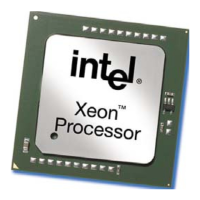
